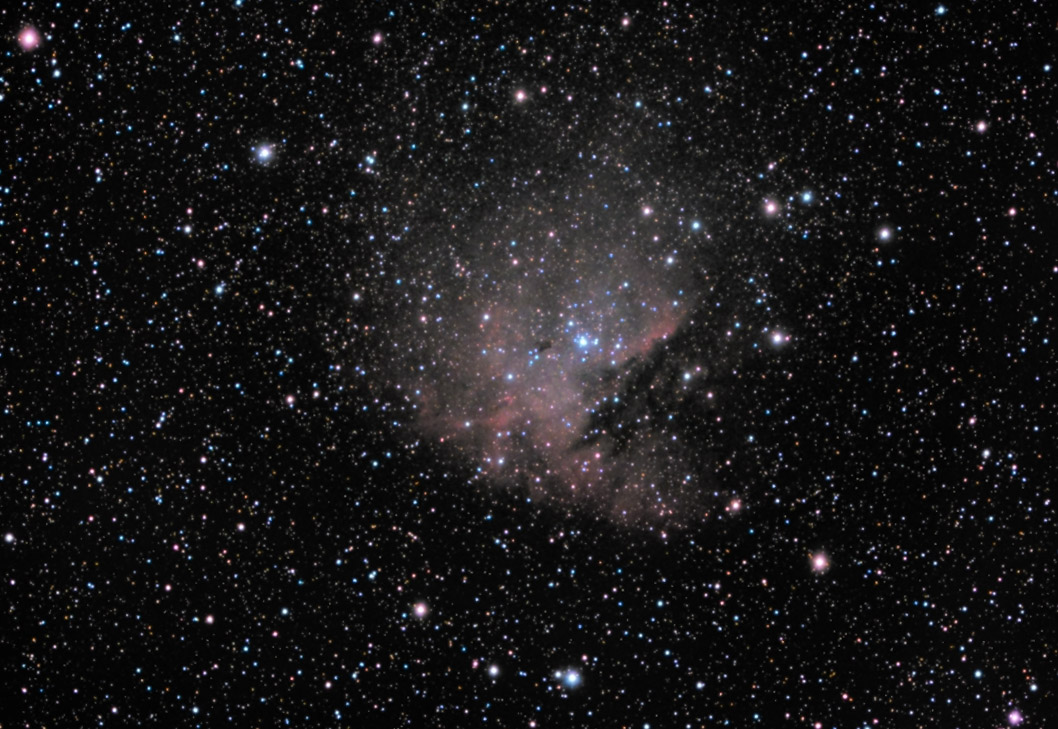Here are three somewhat whimsical objects.
First up: the Pacman Nebula
or more properly, NGC 281. The nebula has several dozen stars at the center, the open cluster IC 1590. The nebula and cluster are about 10,000 light years away from us. Besides the diffusely glowing hydrogen gas we see dark lanes of obscuring dust and dark knots of gas and dust. New stars are likely to be forming within these knots.
NGC 281 (20 min total exposure Jan 14, 2021)


Why the name Pacman Nebula?? Well, anyone over the age of 45 probably remembers PacMan, an early arcade and computer game that was introduced in 1980. The game was quite influential, and is commonly considered to be one of the greatest video games of all time. The player controls Pac-Man, who must eat all the dots inside an enclosed maze while avoiding four colored ghosts.
Next: the 37 Cluster
NGC 2169 is a fairly sparse open star cluster at a distance of about 3,600 light years away from Earth. It is nicknamed “The ‘37’ Cluster” due to its striking resemblance to the numerals “37”
NGC 2169 (5 min total exposure Jan 14, 2021)

Of course, the improbable numerical asterism appears solely by chance and lies at an estimated distance of 3,600 light-years toward the constellation Orion. As far as galactic or open star clusters go, NGC 2169 is a small one, spanning about 7 light-years. Formed at the same time from the same cloud of dust and gas, the stars of NGC 2169 are only about 8 million years old. Such clusters are expected to disperse over time as they encounter other stars, interstellar clouds, and experience gravitational tides while traveling through the galaxy.
And finally: the Coathanger Cluster.
Brocchi’s Cluster (also known as Collinder 399) is a random grouping of ten stars that form an asterism which has given rise to its popular name as the Coathanger.
The Coathanger Cluster (3 min total exposure Jun 27, 2020)

The status of this group as a star cluster has changed in recent years. The group was considered to be a cluster for most of the 20th century. Looking at a variety of criteria, however, a study in 1970 concluded that only 6 of the brightest stars formed an actual cluster. Several independent studies since 1998 have now determined that this object is not a true cluster at all, but rather just a chance alignment of stars. You can click here to read more about the Coathanger.
The Coathanger was another of my favorite objects to view with my small telescope 65 years ago. Since the ten stars are between the fifth and seventh magnitudes, it can be seen very nicely through binoculars.